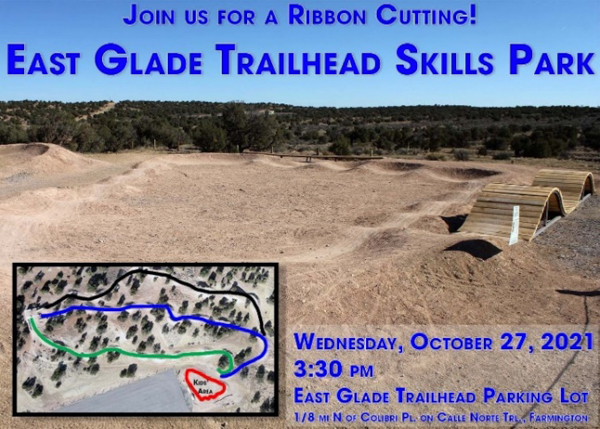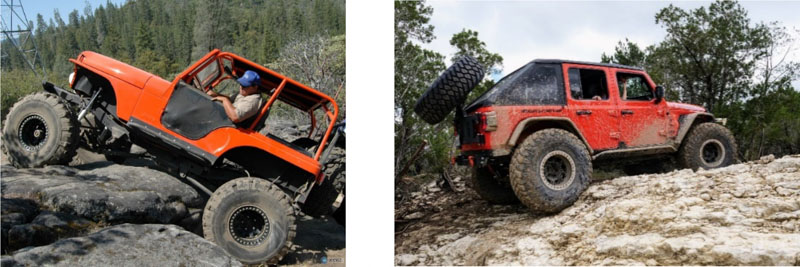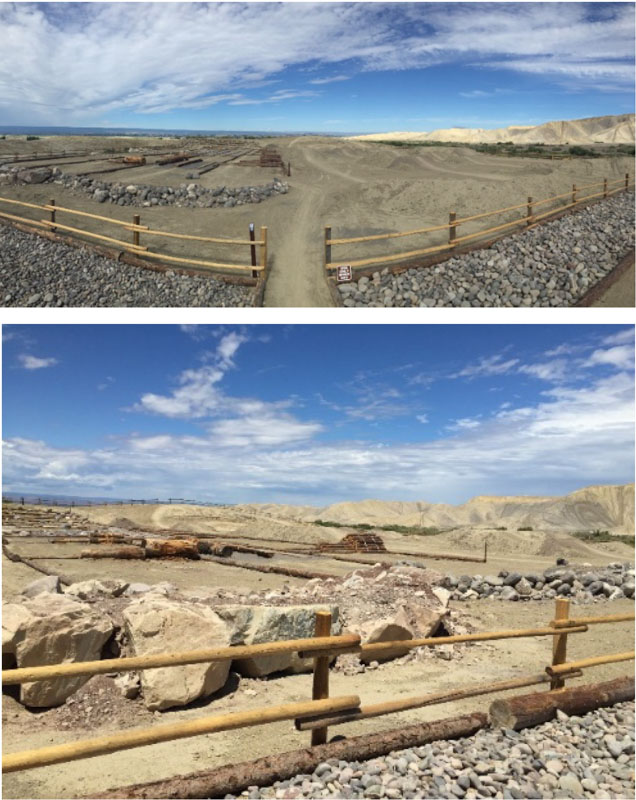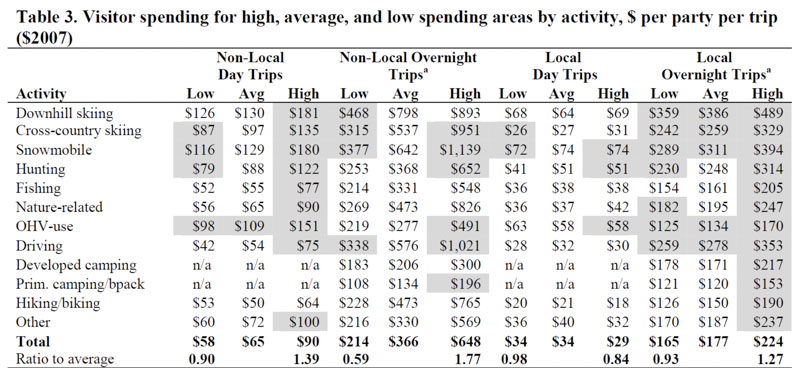
Mitch Martin
Mitch.martin@state.co.us
Fisher Peak development team
Info@fisherspeakstatepark.com
Jeni Jackson
Jeni.Jackson@trinidad.co.gov
Lucas Svare
Lucas.svare@state.com.us
RE: Fisher Peak Stakeholder meeting follow-up
Dear Mitch, Jeni and Team:
We wanted to say thank you for the October 27, 2021 site visit/tour of the Fishers Peak Park with the stakeholder group. It is clear that a large amount of work has already been performed in moving the area from a retired ranch to a viable state park. We are intrigued by the development of a state park for a recreational activity that really has no history of recreational opportunities being provided and Fishers Peak really provided this opportunity. User-created routes and existing impacts from unmanaged recreation are not issues that have to be addressed at a large scale in the Fisher Peak effort. Recreational opportunities can be planned and developed with the goal of zero environmental impacts. Starting with functionally a clean slate is very appealing to us.
COHVCO recently completed a strategic planning effort to identify the goals and desires of the motorized community for the future in partnership with CPW, USFS, and BLM.1 The development of opportunities on State Parks was identified as a priority goal moving forward, as this was seen as an opportunity for more developed type opportunities such as skills areas; rock crawl areas; developed camping opportunities, and other resources that are generally not provided on USFS or BLM lands. Aligning more closely with the State Park system would also be a natural extension of the existing partnership between the motorized community and CPW. Not only is the opportunity provided by Fisher Peak very intriguing to our members, but we can also provide funds to plan, implement and maintain any opportunities that might be developed on the Park moving forward. Expansion of OHV opportunities on State Park systems in many adjacent states has FAR outpaced these developments in Colorado, despite every adjacent state having a FAR smaller OHV program.
The level of effort expended on the Fishers Peak site to date was especially apparent when compared to the status of the ranch at our last visit with CPW representatives and other interested parties in 2018 or 2019. We believe this meeting was before the state park acquisition was made public. At this 2018 or 2019 meeting we had conceptual discussions around development of motorized opportunities on generally the northwestern corner of the park along the I25 Corridor.
We were thrilled to see that detailed analysis of this area identified it as an area that would be highly consistent with multiple uses confirming our previous informal inventory conclusions. At the same time, we are also disappointed that our previous involvements in the planning process, from functionally day one, have yielded no opportunities for the motorized community on the park despite our partnership with CPW for more than 50 years seeking to provide sustainable multiple use opportunities throughout the state. Further expanding our disappointment was the fact that while multiple use opportunities are not provided, user groups that continue to avoid partnering with CPW have been provided significant opportunities. This decision sends a strong message to both partners and non-partners and we do not believe this message should be overlooked.
1. Our partnership with CPW.
The motorized community began our partnership with CPW, with the creation of the winter grooming program and voluntary registration programs in the early 1970s. Our partnership with CPW expanded significantly in 1988, when the voluntary OHV program was passed into law. Our partnership with CPW has developed an OHV/OSV trails program that is a model for other states and is now approaching $8 million a year in annual grants.2 Generally these funds go to support almost 60 maintenance crews across the State. Additionally, the fund provides grants for a large amount of project-specific or capital type resources, such as skid steers, mini-excavators, and other operational support.
Predominately these resources are targeting USFS and BLM lands but the program provides funding for seasonal maintenance crews on numerous State Parks such as State Forest State Park, Arkansas Headwaters recreation area, and Jackson Lake State Park on an “as needed” basis to support motorized opportunities provided on these parks. In addition to these opportunities supported on state lands we also support facilities on local government lands such as the motocross tracks in Lake County and Eagle County; and in Gyspum. The fund may also be used for development costs for facilities, such as planning and development of the facility we would like to target Fisher Peak for development of. Candidly, no other user group comes close to this type of direct funding of resources for state and federal lands managers. While most groups are struggling to put one or two crews on the ground, the motorized community is approaching 60 across the state and many have been in place for decades. It is with this level of collaboration and proven track record of meaningful engagement we are making this request.
2. Our ask moving forward.
Our first ask is unrelated to the specific facilities on the park but rather would be in the spirit of collaboration that has driven Fisher Peak efforts to date. If there are concerns about our proposal, we would welcome a discussion of these concerns. We were surprised when conceptual renderings at the stakeholder meetings did not include any motorized opportunities as we had been invited to participate by CPW previously. Generally, what we are asking for on the park is three concepts and would be highly consistent with the proposed direction of significant portions of the park. Overall, the facilities we are requesting would be a place to try out a new piece of equipment, make sure your equipment is going to run before traveling further or practice your skills in a safe environment.
Since the October stakeholder meeting, we have quietly discussed Fishers Peak with several local Club presidents and their first question has consistently been:
“We could do that?”
After resolving that question, their enthusiasm has been immediate and they wanted to start development/construction as soon as possible as opportunities for these experiences are very limited on the Front Range. We are aware that some in the Fisher Peak discussion have had concerns about the proximity of the park to populations. Our response to this concern would be that most of our members saw Fishers Peak as close to them compared to other locations. By comparison, many of our members are traveling to the western slope of Colorado, Utah or Texas to obtain similar opportunities.
a. Skills area/Kids area with camping
Our first request would be for a skills area/training area type development in the northwest corner of the park. These skills area/kids area types of facilities are far more common in the Midwest and Eastern US as these areas are frequently associated with OHV parks rather than the large tracts of public lands that are found in Colorado. While these areas are not common in Colorado, there is a significant demand for these opportunities, especially when they are adjacent to developed camping areas. While these opportunities are limited, they are also expanding as evidenced by the newly opened Trailhead Skills park in Farmington NM. The following photo represents this facility.
The Organizations have also participated in the planning of the Badger Flats Camping area on the South Park Ranger District. This project received significant funding from the OHV program and was able to transform a user-created area for camping and youth OHV trails from an area that was largely unmanaged and with serious impacts to a high-quality sustainable recreational opportunity3. While this facility is impressive, it lacks more intensive use areas such as a skills area or rock crawling area and frequently reaches capacity very quickly. We could see Fisher Peak facilities supplementing the opportunities provided by the Badger Flats facility and we could see the Fishers Peak facility being easier to develop as the area does not have the history of impacts from the failure of the area to be managed and maintained.

b. Rockcrawling/Trials Motorcycle area adjacent too or as part of the skills area.
Conceptually we would like to include a rockcrawling/trials motorcycle area in conjunction with the skills area concept identified above. Conceptually, what most of the Colorado population sees as a giant pile of rocks is seen as a lifetime of recreational opportunities by these users. The following photos represent a trials motorcycle type of use. We are providing these pictures as trials riding is VERY different from the more traditionally know motorcycle experience based on motocross racing. Trials is very slow and deliberate compared to what people commonly associate with motorcycle riding.

The infrastructure required for a trials motorcycle area are also well suited for a 4×4 rockcrawling area. Again this is a sport where there are limited opportunities and strong demand for these opportunities.

Both of these sports are growing in popularity in Colorado, but suffer from a critical problem, mainly the opportunity areas for these sports are VERY limited. Colorado Springs has been the base of operations for the Rocky Mountain Trials Association since 1969.4 The Carnage Canyon area on the Royal Gorge Field Office provide the 4×4 rockcrawling area but often closed due to weather and has limited capacity. Often in the limited times these opportunities are available in other areas of the State such as the Western Slope, they are not easily accessible and the area entirely lacks infrastructure such as developing camping facilities or proximity to a community. Users of these areas already travel long distances for these opportunities consistently travel long distances for these types of opportunities.
An example of the blended trail head facilities we are seeking would be the are we partnered to build on Peach Valley OHV area of Uncompahgre Field Office of the BLM outside Montrose Colorado.

The response from our users has been exceptionally positive on the Peach Valley project, but this facility is outside Montrose, Colorado and is a long travel for most citizens on the Front Range of Colorado. Peach Valley also lacks developed camping facilities in the area. From our perspective, the Fishers Peak site has many advantages compared to the Peach Valley Site, as Fishers Peak is adjacent to I25, has many large rocks that could be used for facility development.
Our ask would unite the three experiences in one location by providing a rockcrawl/trials area, with tot/skills track and limited trail network with developed camping facilities. Currently, these opportunities are very limited and many people are traveling out of state to obtain these experiences. Fishers Peak based facilities would capture these users in the State of Colorado to support Colorado communities and businesses.
c. Trail connectivity from the OHV facilities proposed to the camping facilities on the park.
The Organizations would also ask for a small trail network in generally the same area to further refine skills learned in the area and also to connect the skills facility to camping facilities being developed on the south end of the park. This trail network would allow OHV users to connect with their camping rigs without having to go through park entrances or other barriers to people entering the park. The Organizations would also have concerns about OHV users and large campers traversing the same road between the entry point of the park and campsites. This is not a good recreational experience and also would probably result in management issues and challenges which we would like to avoid.
3. Economic contributions from OHV recreation are unparalleled.
Throughout the October stakeholder meeting we participated in, discussions around the long-term economic benefits that the City of Trinidad and other communities are anticipating from the park. On this issue, the contributions of the OHV community are unparalleled as our members spend money at high levels and will pay for service and opportunities. COHVCO has developed an economic contribution study for OHV recreation in Colorado in partnership with CPW, USFS and BLM, and we have attached this study with these comments.
As the COHVCO study notes, the OHV community spends large amounts of money to pursue their sport. Another important component of this discussion is how does the spending profile of the OHV community compare to other users. The USFS has provided the following comparative analysis as part of their national Visitor use monitoring process5.

The Organizations submit that our proposal unites several of the strongest spending profiles that have been established by the US Forest Service into a single recreational experience. The Organizations would note that if economic contributions were sought to be maximized with the Fishers Peak effort, there should be a realignment of opportunities being provided, as much of those being provided only spend at far lower levels than what is being proposed.
4. Conclusion.
The Organizations would welcome a discussion of these opportunities and any other challenges that might be facing recreational opportunities on the Park moving forward at your convenience. Please feel free to contact Marcus Trusty yellowyj@hotmail.com or via phone at 719-221-9786 or Scott Jones at scott.jones46@yahoo or via phone at 518-281-5810.
Respectfully Submitted,
Scott Jones, Esq.
CSA & COHVCO Authorized Representative
Chad Hixon
Executive Director – TPA
Marcus Trusty
President – CORE
1 A copy of this report is available upon request.
2 More information on this program is available here: Colorado Parks & Wildlife – OHV Grant Submissions (state.co.us)
3 All planning documents on this project are available here: Forest Service (usda.gov)
4 Rocky Mountain Trials Association – Observed Trials in Colorado since 1969
5 See, USDA Forest Service; Stynes and White; Pacific Northwest Research Station; Updated spending profiles for national recreation visitors by activity; November 2010 at pg. 6.
